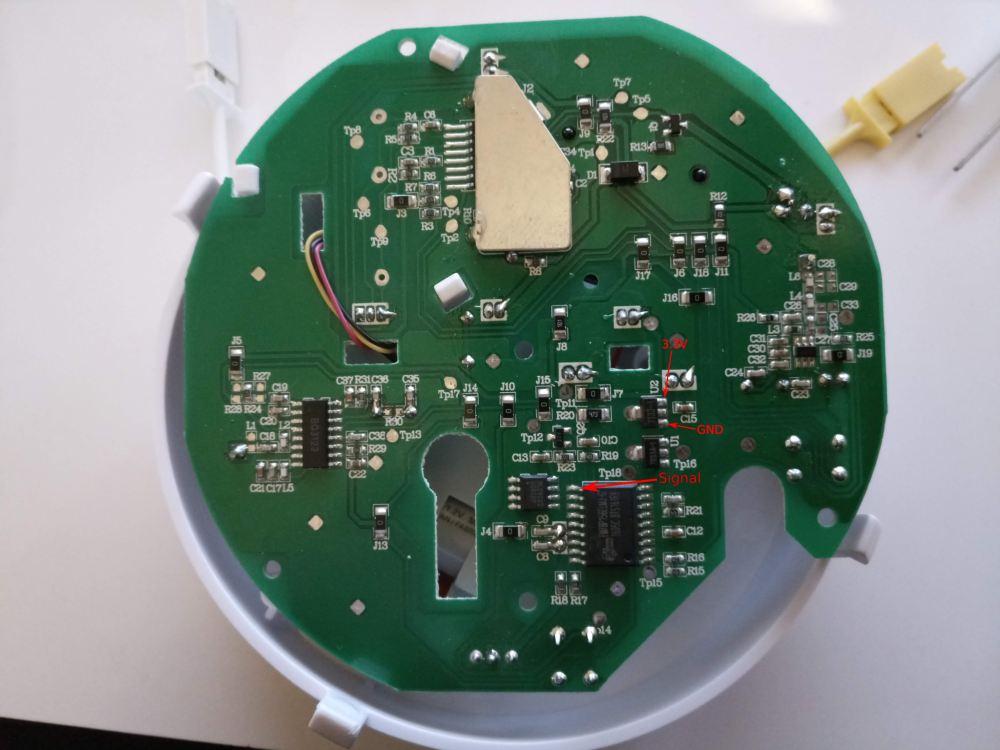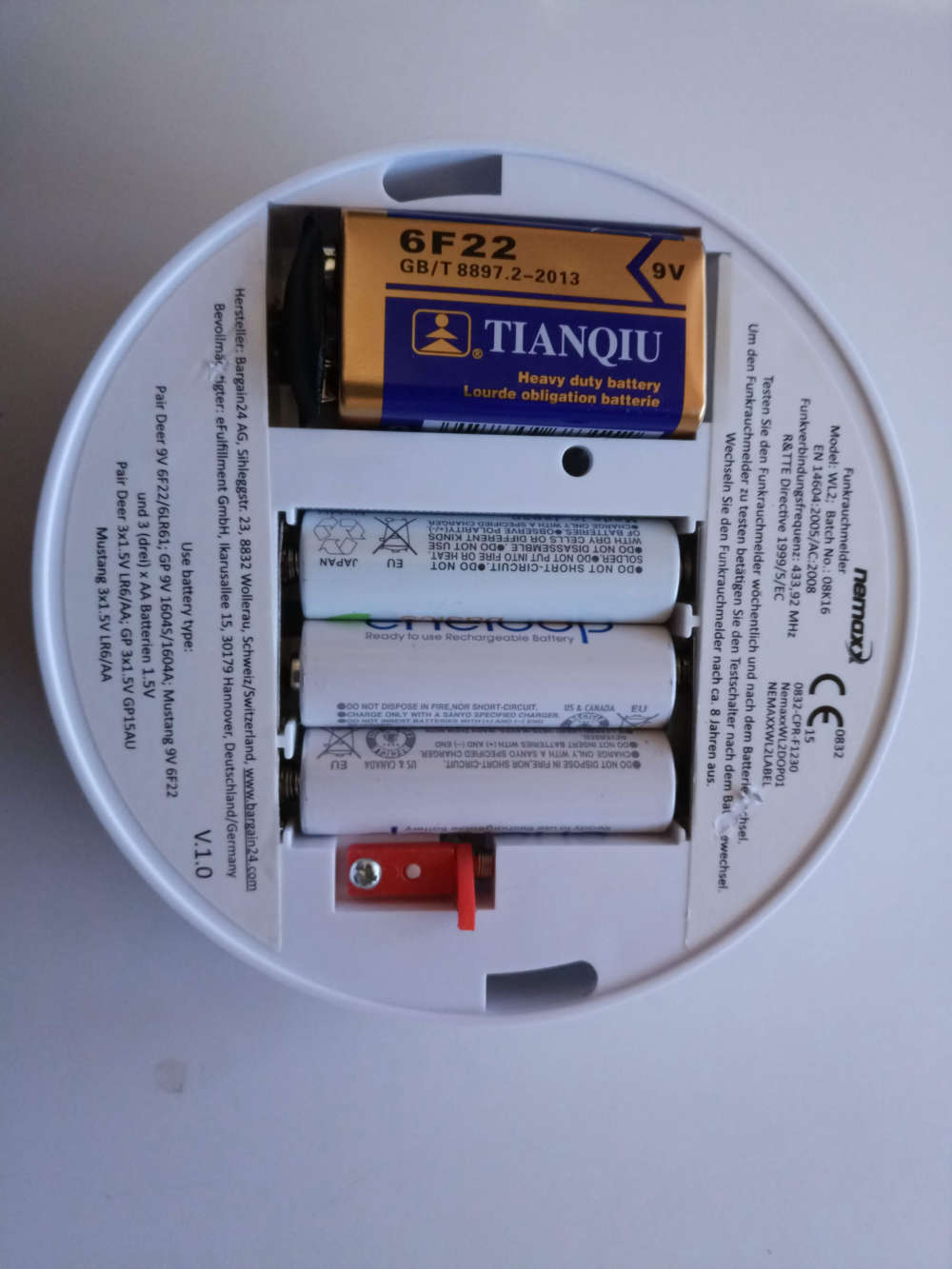@DavidZH
I have been working on a similar problem lately and just noticed your post. I also tried using libraries at first, but ran into issues due to bouncing signals from the buttons. The pin change interrupt service routine tried to detect which button was pressed, but since the signal was bouncing, button presses were missed. The system would wake up but not call the appropriate callback function associated with the pin.
I put together a sketch that works for me. It involves setting up the change pin interrupts, detecting which button is pressed and some provisions for debouncing the signal. It uses a small hack to leave the timed sleep function on pin change interrupts. I did not have trouble entering sleep like you did.
Please note that this sketch uses the current MySensors development branch.
The sketch is below, I hope it helps.
/**
* The MySensors Arduino library handles the wireless radio link and protocol
* between your home built sensors/actuators and HA controller of choice.
* The sensors forms a self healing radio network with optional repeaters. Each
* repeater and gateway builds a routing tables in EEPROM which keeps track of the
* network topology allowing messages to be routed to nodes.
*
* Created by Henrik Ekblad <henrik.ekblad@mysensors.org>
* Copyright (C) 2013-2015 Sensnology AB
* Full contributor list: https://github.com/mysensors/Arduino/graphs/contributors
*
* Documentation: http://www.mysensors.org
* Support Forum: http://forum.mysensors.org
*
* This program is free software; you can redistribute it and/or
* modify it under the terms of the GNU General Public License
* version 2 as published by the Free Software Foundation.
*
*******************************
*
* DESCRIPTION
*
* Interrupt driven binary switch example with dual pin change interrupts
* Author: Francis Reynders
* MySensors does not support pin change interrupts currently. This sketch
* initializes pin change interrupts and combines it with MySensors sleep
* functions. Some hacking is required to get out of the hwInternalSleep loop.
* Tested with atmega328p standalone but should work with Arduino Nano/Pro MiniCore
* Uses RFM69 for transport.
*
* Based on original work by:
* Author: Patrick 'Anticimex' Fallberg
* Connect one button or door/window reed switch between
* digitial I/O pin 3 (BUTTON_PIN below) and GND and the other
* one in similar fashion on digital I/O pin 2.
* This example is designed to fit Arduino Nano/Pro Mini
*
*/
// Enable debug prints to serial monitor
#define MY_DEBUG
// Enable and select radio type attached
//#define MY_RADIO_NRF24
#define MY_RADIO_RFM69
#define MY_RFM69_ENABLE_ENCRYPTION
#define MY_RFM69_FREQUENCY RF69_433MHZ // Set your frequency here
//#define MY_IS_RFM69HW // Omit if your RFM is not "H"
//#define MY_RFM69_NETWORKID 100 // Default is 100 in lib. Uncomment it and set your preferred network id if needed
#define MY_RF69_IRQ_PIN 2
#define MY_RF69_IRQ_NUM 0
#define MY_RF69_SPI_CS 10
//#define MY_NODE_ID 2
#include <MySensors.h>
#define SKETCH_NAME "Binary Sensor"
#define SKETCH_MAJOR_VER "2"
#define SKETCH_MINOR_VER "0"
#define PRIMARY_CHILD_ID 3 // PD3
#define SECONDARY_CHILD_ID 4 // PD4
#define PRIMARY_BUTTON_PIN 3 // Arduino Digital I/O pin for button/reed switch
#define SECONDARY_BUTTON_PIN 4 // Arduino Digital I/O pin for button/reed switch
#define DEBOUNCE_INTERVAL 100
#define DEBOUNCE_COUNT_THRESHOLD 15 // required consecutive positive readings
#define PREVENT_DOUBLE_INTERVAL 400
#define SLEEP_TIME (6 * 60 * 60 * 1000ul) // Check battery every 6 hours
#define BATTERY_MAX_MVOLT 2900
#define BATTERY_MIN_MVOLT 2300
// Change to V_LIGHT if you use S_LIGHT in presentation below
MyMessage msg(PRIMARY_CHILD_ID, V_LIGHT);
MyMessage msg2(SECONDARY_CHILD_ID, V_LIGHT);
bool triggered = false;
uint32_t lastWakeup = 0;
uint16_t lastBatteryVoltage = 0u;
enum wakeup_t {
WAKE_BY_TIMER,
WAKE_BY_PCINT0,
WAKE_BY_PCINT1,
WAKE_BY_PCINT2,
UNDEFINED
};
volatile wakeup_t wakeupReason = UNDEFINED;
// Pin change interrupt service routines
ISR (PCINT0_vect) // handle pin change interrupt for PCINT[7:0]
{
wakeupReason = WAKE_BY_PCINT0;
_wokeUpByInterrupt = 0xFE; // Dirty hack to get out of MySensors sleep loop
}
ISR (PCINT1_vect) // handle pin change interrupt for PCINT[14:8]
{
wakeupReason = WAKE_BY_PCINT1;
_wokeUpByInterrupt = 0xFE; // Dirty hack to get out of MySensors sleep loop
}
ISR (PCINT2_vect) // handle pin change interrupt for PCINT[23:16]
{
wakeupReason = WAKE_BY_PCINT2;
_wokeUpByInterrupt = 0xFE; // Dirty hack to get out of MySensors sleep loop
}
void pciSetup(byte pin)
{
*digitalPinToPCMSK(pin) |= bit (digitalPinToPCMSKbit(pin)); // enable pin
PCIFR |= bit (digitalPinToPCICRbit(pin)); // clear any outstanding interrupt
PCICR |= bit (digitalPinToPCICRbit(pin)); // enable interrupt for the group
}
void setup()
{
CORE_DEBUG(PSTR("Started\n"));
// Workaround to use center frequency
//_radio.setFrequency(RF69_EXACT_FREQ);
#ifdef MY_IS_RFM69HW
_radio.setPowerLevel(16); // 10dBm for RFM69HW
#else
_radio.setPowerLevel(28); // 10dBm for RFM69W
#endif
pinMode(PRIMARY_BUTTON_PIN, INPUT); // set pin to input
digitalWrite(PRIMARY_BUTTON_PIN, INPUT_PULLUP); // turn on pullup resistors
pinMode(SECONDARY_BUTTON_PIN, INPUT); // set pin to input
digitalWrite(SECONDARY_BUTTON_PIN, INPUT_PULLUP); // turn on pullup resistors
// Set up Pin change interrupt
pciSetup(PRIMARY_BUTTON_PIN);
pciSetup(SECONDARY_BUTTON_PIN);
}
void presentation()
{
// Send the sketch version information to the gateway and Controller
sendSketchInfo(SKETCH_NAME, SKETCH_MAJOR_VER "." SKETCH_MINOR_VER);
// Register binary input sensor to sensor_node (they will be created as child devices)
// You can use S_DOOR, S_MOTION or S_LIGHT here depending on your usage.
// If S_LIGHT is used, remember to update variable type you send in. See "msg" above.
present(PRIMARY_CHILD_ID, S_LIGHT);
present(SECONDARY_CHILD_ID, S_LIGHT);
}
void loop()
{
// Unset value from dirty hack to get out of sleep loop (set in interrupt)
_wokeUpByInterrupt = INVALID_INTERRUPT_NUM;
CORE_DEBUG(PSTR("Woken up\n"));
if(wakeupReason == WAKE_BY_PCINT2) {
wakeupReason = UNDEFINED;
handleButtons();
}
handleBatteryLevel();
CORE_DEBUG(PSTR("Going to sleep...\n"));
sleep(SLEEP_TIME);
}
void handleButtons()
{
static uint8_t button1Count;
static uint8_t button2Count;
static uint32_t started, ended, delta;
CORE_DEBUG(PSTR("Detecting buttons START\n"));
button1Count = 0;
button2Count = 0;
// Try and detect which key during max DEBOUNCE_INTERVAL
started = millis();
while(millis() - started < DEBOUNCE_INTERVAL) {
if(digitalRead(PRIMARY_BUTTON_PIN) == LOW) {
button1Count++;
} else {
button1Count=0;
}
if(digitalRead(SECONDARY_CHILD_ID) == LOW) {
button2Count++;
} else {
button2Count=0;
}
if(button1Count > DEBOUNCE_COUNT_THRESHOLD) {
CORE_DEBUG(PSTR("Button 1 pressed\n"));
send(msg.set(1));
break;
}
if(button2Count > DEBOUNCE_COUNT_THRESHOLD) {
CORE_DEBUG(PSTR("Button 2 pressed\n"));
send(msg2.set(1));
break;
}
}
CORE_DEBUG(PSTR("Detecting buttons END\n"));
// This section prevents detecting additional bounces
ended = millis();
if(ended > started) {
delta = ended - started;
if(delta < PREVENT_DOUBLE_INTERVAL) {
CORE_DEBUG(PSTR("Waiting: %d \n"), PREVENT_DOUBLE_INTERVAL - delta);
wait(PREVENT_DOUBLE_INTERVAL - delta); // In case the signal still is not stable after detection
}
}
}
void handleBatteryLevel()
{
static uint16_t voltage;
static uint8_t batteryPct;
CORE_DEBUG(PSTR("Checking Battery BEGIN\n"));
voltage = hwCPUVoltage();
CORE_DEBUG(PSTR("Voltage: %d\n"), voltage);
// Process change in battery level
if(lastBatteryVoltage == 0 || lastBatteryVoltage != voltage) {
lastBatteryVoltage = voltage;
if(voltage < BATTERY_MIN_MVOLT) {
batteryPct = 0;
} else {
batteryPct = 100 * (voltage - BATTERY_MIN_MVOLT) / (BATTERY_MAX_MVOLT - BATTERY_MIN_MVOLT);
}
sendBatteryLevel(batteryPct);
} else {
CORE_DEBUG(PSTR("No Change\n"));
}
CORE_DEBUG(PSTR("Checking Battery END\n"));
}


